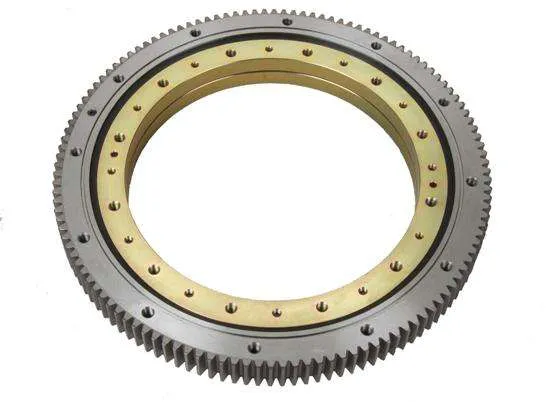UNA cojinete de giro is a specialized type of bearing that allows for rotational or slewing movement, typically used in heavy machinery. It consists of an inner ring and an outer ring, with rolling elements (like balls or rollers) between them. Unlike traditional bearings, slewing bearings are designed to handle both axial (up-and-down), radial (side-to-side), y momento (inclinación) Cargas simultáneamente.
Selecting a slewing bearing requires careful consideration of the application, requisitos de carga, y factores ambientales. Here’s a step-by-step guide to help you choose the right slewing bearing:
Slewing Bearing Selection

1. Load Type and Magnitude
Carga radial: The force perpendicular to the axis of rotation.
Carga axial: The force parallel to the axis of rotation.
Carga de momento: The force that causes the bearing to tilt or rotate about an axis.
Tip: Identify the magnitude of these loads and choose a bearing with appropriate load capacities. Most manufacturers provide load capacity charts for slewing bearings.
2. Condiciones de funcionamiento
Velocidad: Consider the rotational speed and any speed variations.
Temperatura: Check if the slewing bearing can withstand extreme temperature conditions.
Ambiente: Polvo, humedad, and corrosive environments may require bearings with special seals or coatings.
3. Precision Requirements
Applications such as robotics or medical equipment require high-precision slewing bearings. For heavy machinery, moderate precision is usually sufficient.
4. Montaje e instalación
Ensure the bearing fits within the space available in the equipment.
Some bearings have internal or external gear teeth, while others are toothless—choose the right one depending on the drive system.
…
For more detailed information on slewing bearing selection, por favor haga clic aquí: https://www.mcslewingbearings.com/en/a/news/slewing-bearing-selection.html

